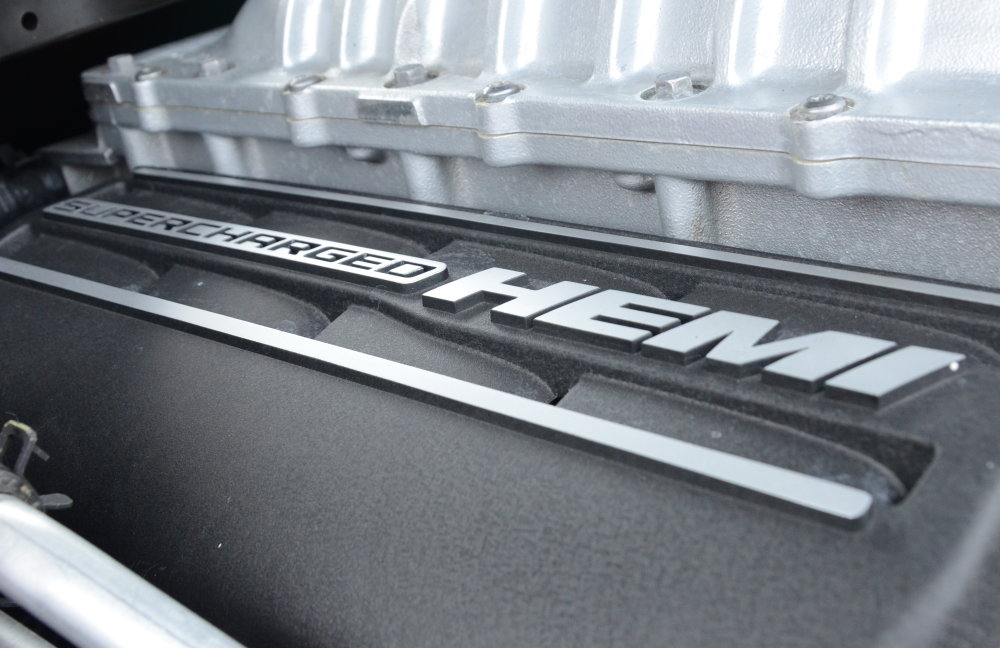Mopar Glory: 6 of Greatest Dodge Performance Engines Ever Made

Dodge cars have featured some incredible engines, from the 340 to the Hemi to the Viper V10.
The Dodge brand has offered many stunning performance cars over the years, all of which relied on legendary engines. Leading up to the original muscle car era and during it, Dodge had a lineup of small block and big block V8 engines that helped make Mopar the first choice among many gearheads.
Like all American brands, Dodge suffered from the budding emission laws in the 1970s and 1980s. Fortunately, in the 1990s, the brand stormed back into the performance car scene with the Viper. A decade later, the modern muscle cars were introduced with a whole new lineup of high performance engines. These modern engines have once again put Ma Mopar at the front of the horsepower race, joining the legendary engines from the past.
Today, we take a look at the six greatest Dodge car engines of all time, along with an honorable mention that nods to the brand’s success with four-cylinder performance cars. We aren’t ranking the engines in order, instead looking at the classic engines first, then the newer engines.
Here we go!
1. Legendary Dodge 340 Small Block
First up, we have the 340-cubic inch V8 small block, which was introduced for the 1968 model year in models like the Dart GTS. It offered 275 horsepower and 340 lb-ft of torque, serving as the high performance small block option to the big blocks. In 1970, the 340 Six Pack was introduced in the Challenger T/A, offering 290 horsepower and 345 lb-ft of torque. This configuration of the 340 was the most powerful Mopar small block during the original muscle car era.
As emission requirements got tougher in 1972, the Chrysler engineers were forced to detune the 340. This was done by moving to cylinder heads with a combustion chamber that yielded a lower compression rate, along with smaller valves. This engine was still the strongest small block at 240 horsepower and 290 lb-ft of torque, but 1973 was the final year for the 340.

One interesting distinction of the 340 is that it is the only small block ever offered only as a performance model. While there were performance versions of the 273, 318 and 360, those engines all had multiple versions which included low performance variants.

Although the 340 saw a power drop in 1972, it was still strictly a performance engine. The only other engine from the classic muscle car era to only be offered as a performance engine was the 426 Hemi.
2. Voracious 426 Hemi
Arguably the greatest Mopar engine of all time, the 426-cubic inch Hemi V8 was introduced to the Dodge brand in 1966.
It was an expensive, premium option the Coronet and the Charger in that first year. As time went on, the 426 Hemi would find its way into the legendary Super Stock Dart, the Super Bee, the Challenger and the Charger Daytona. In every Dodge car, the Hemi was the most powerful and most expensive option, offering official figures of 425 horsepower and 490 lb-ft of torque.
It is widely believed that the engine produced far more power than that, but Chrysler rated it low to help make insurance costs more manageable.

This engine made every Dodge car to carry it the quickest and most powerful in their respective class. It was the engine that every gearhead wanted, but the price kept sales figures of Hemi-powered models relatively low. Also, when emission laws began forcing automakers to detune performance engines in 1972, Chrysler didn’t water-down the Hemi – they just discontinued it.

Between the high price and the relatively short production window, Hemi cars have become the most valuable and sought after of the classic Dodge muscle cars. In fact, Dodge Hemi cars are among the most sought after and the most valuable of any classic American cars. Of course, the 426 Hemi also motivated many of the quickest drag cars in the world since being introduced in the 1960s.

3. Supreme 440 Big Block
If you wanted a monster Mopar muscle car back in the late-1960s or early-1970s and you didn’t want to deal with the high price of the Hemi, the 440-cubic inch big block was likely your ideal engine. The 440 was offered in several large Dodge cars in 1966 with 350 horsepower, but in 1967, the Coronet R/T and Charger R/T both got the new 440 Magnum. This version of the 440 featured a single four-barrel carburetor and offered a mix of 375 horsepower and 480 lb-ft of torque.
This version of the 440 big block would be featured with a Six Pack carburetor setup in the Coronet, the Charger and the Challenger, delivering 390 horsepower and 490 lb-ft of torque.

The 440 would be used well into the emission era in the big Dodge cars, but those later engines paled in comparison to the 440s of the late-1960s and early-1970s. In the long run, the 440 was usually the engine that a Dodge buyer picked when he or she was concerned most with big power, but without the cost of the Hemi.


